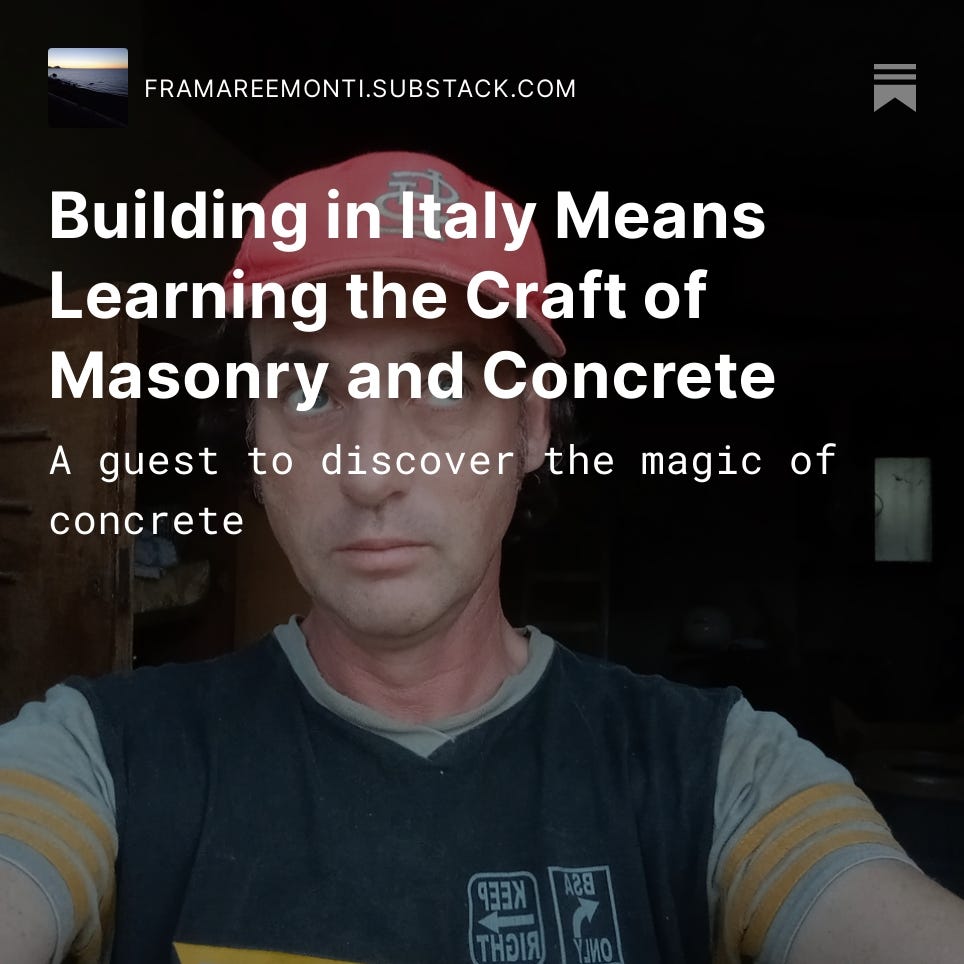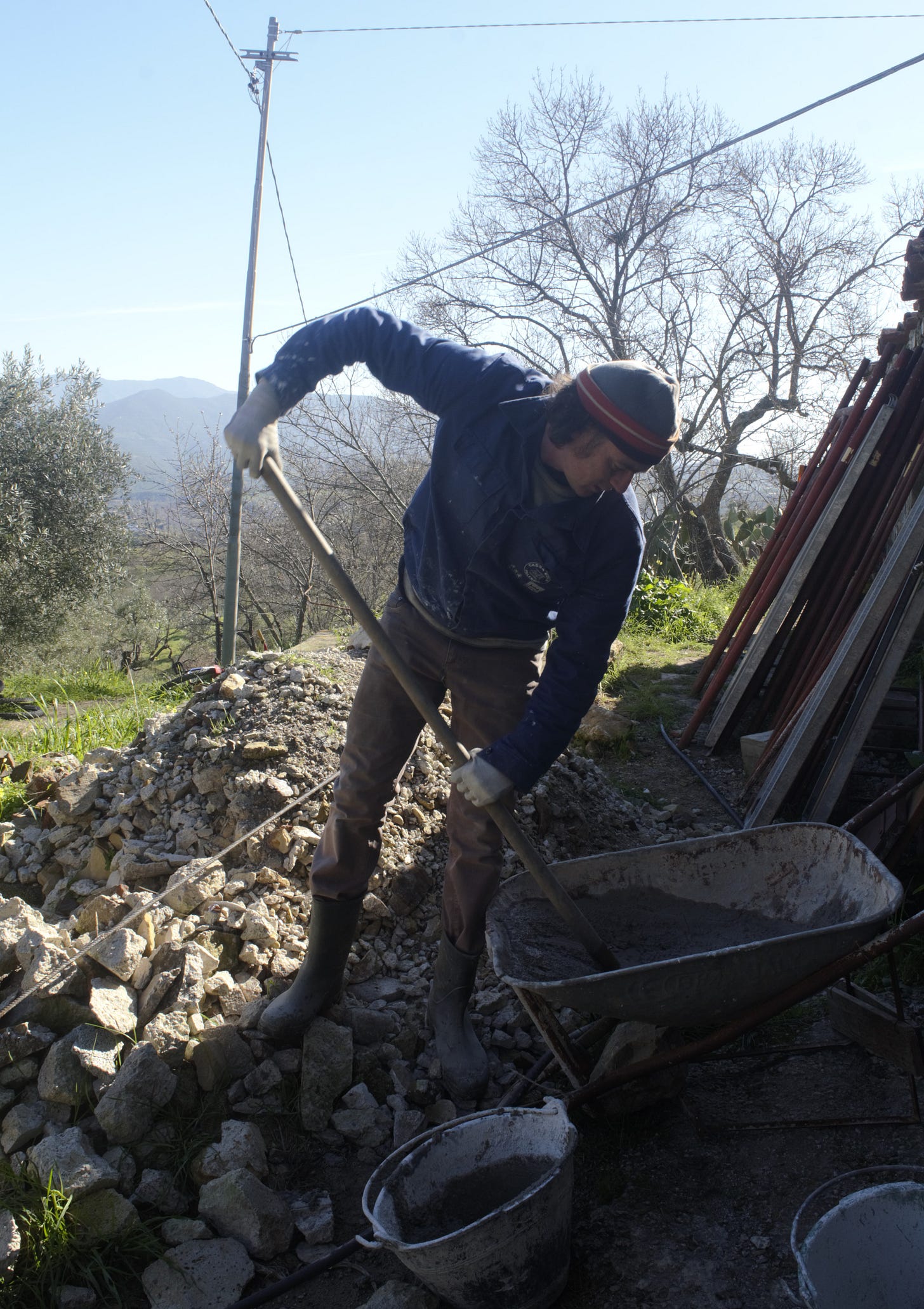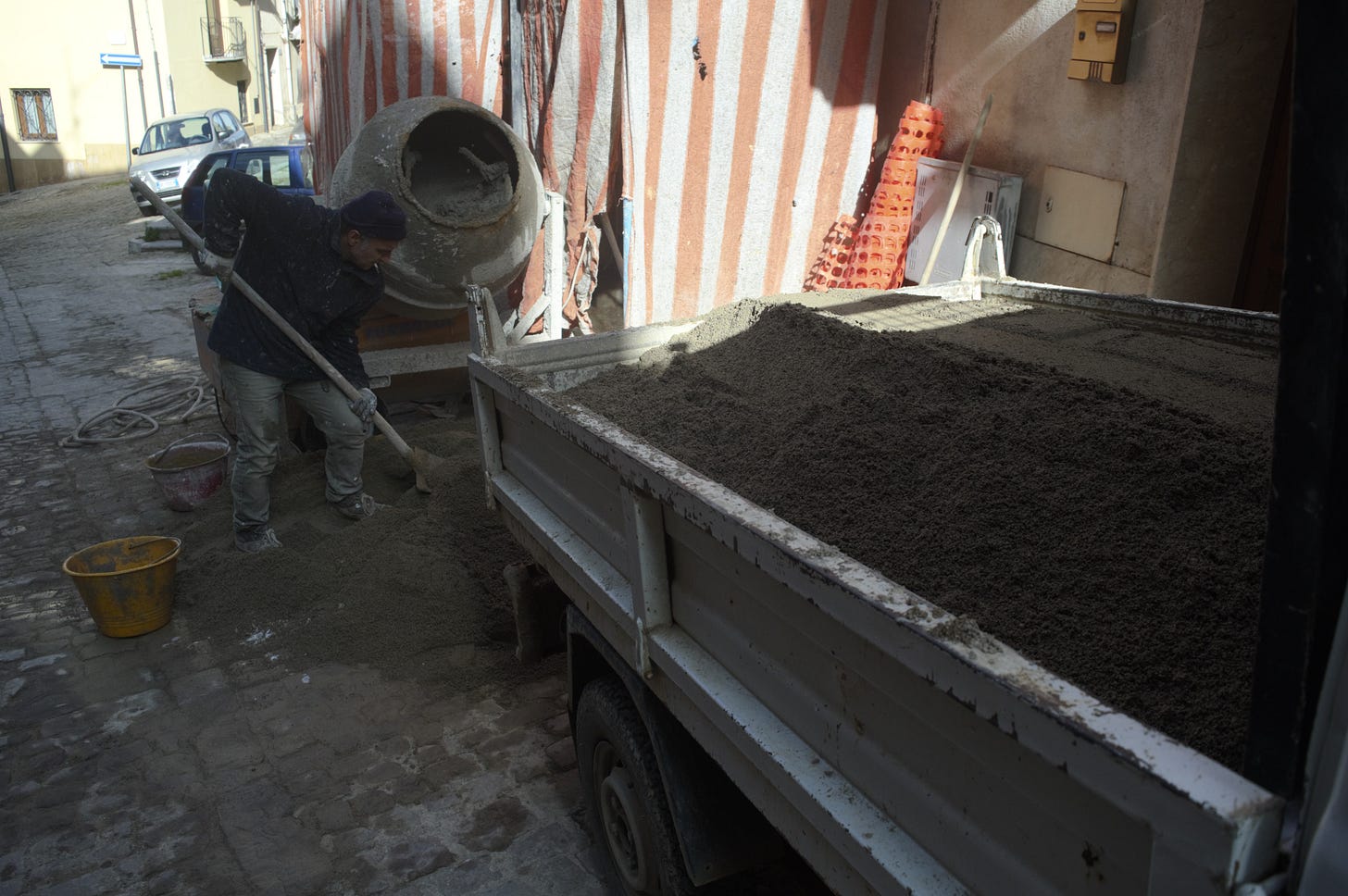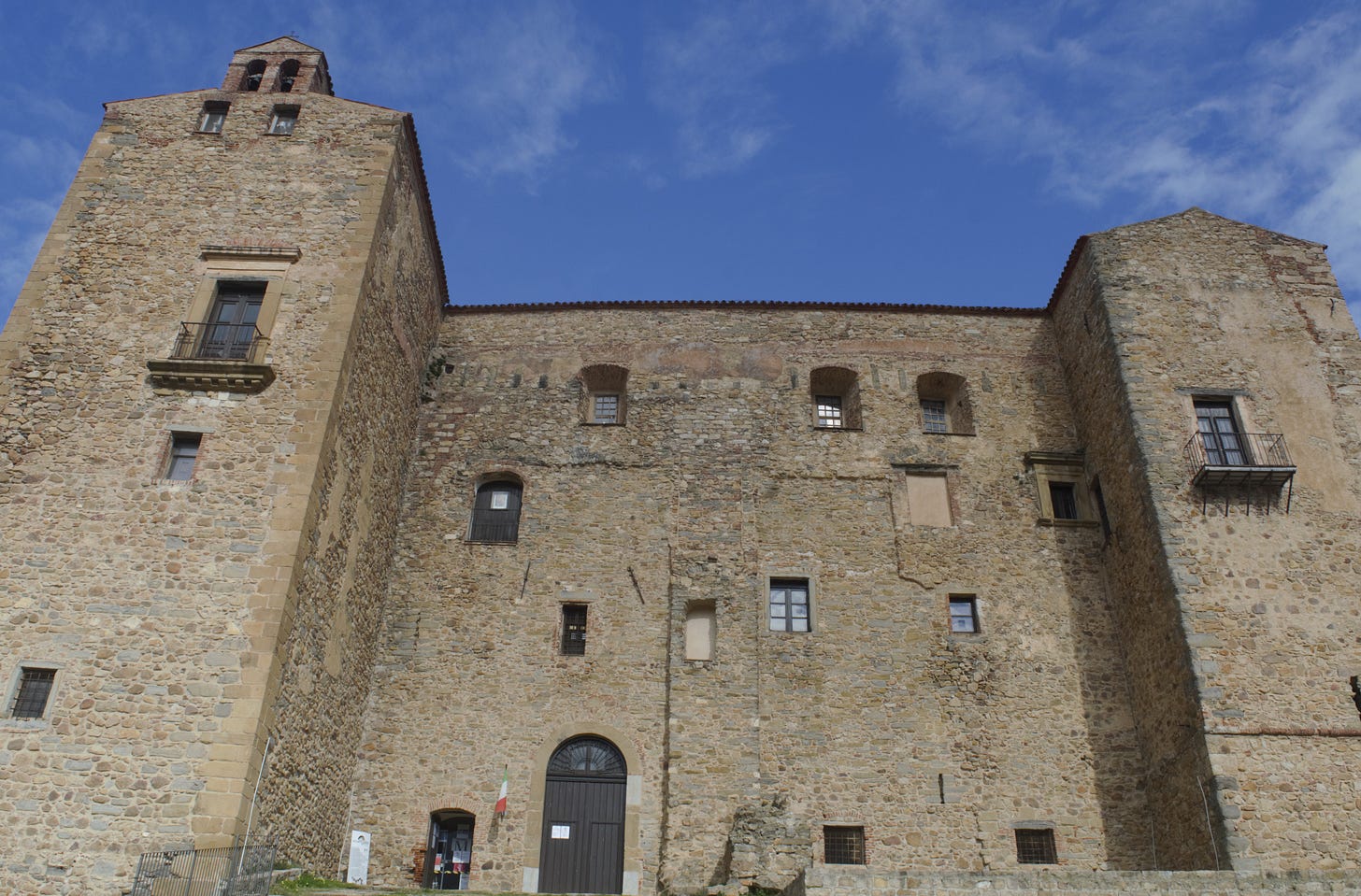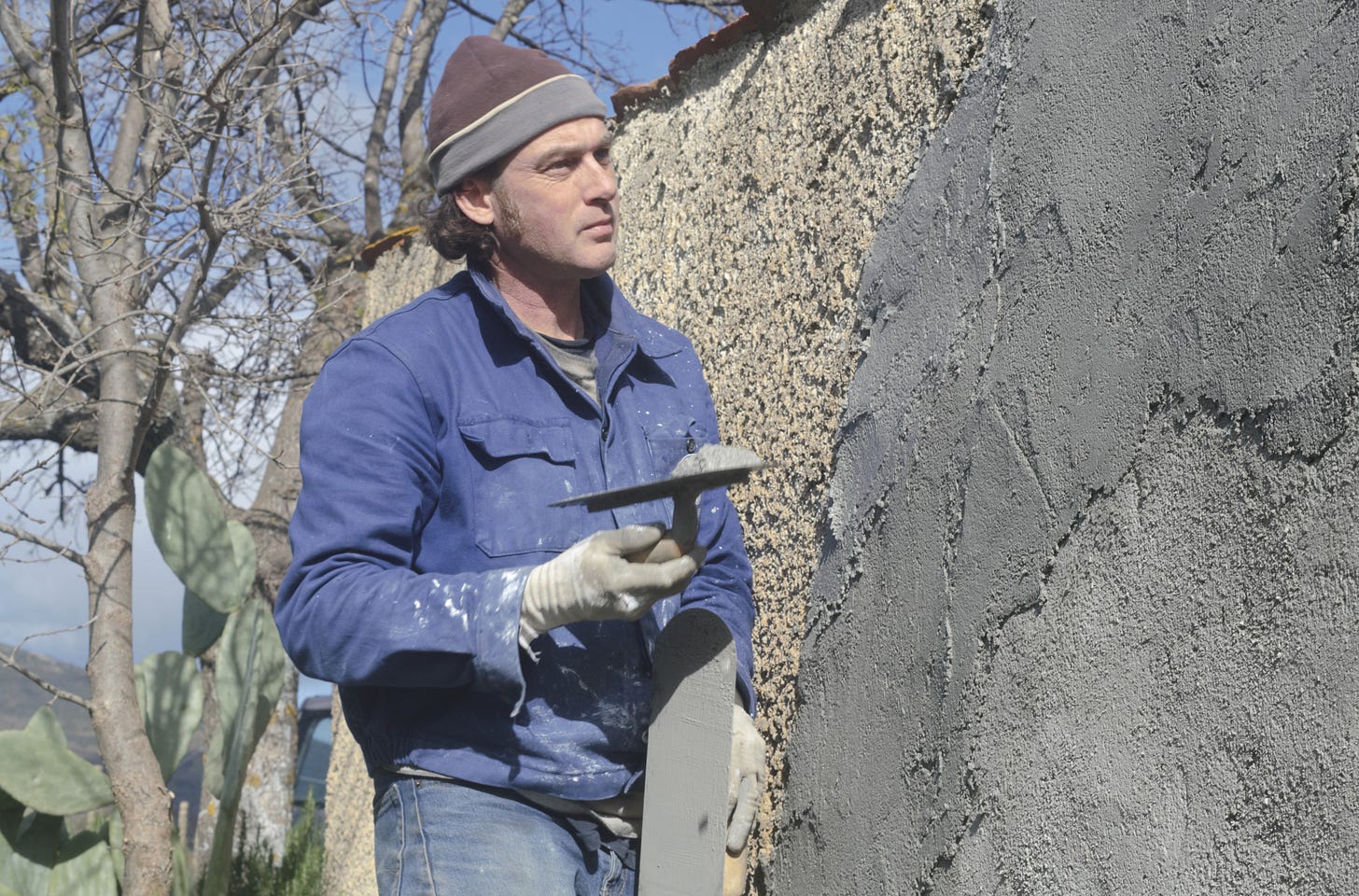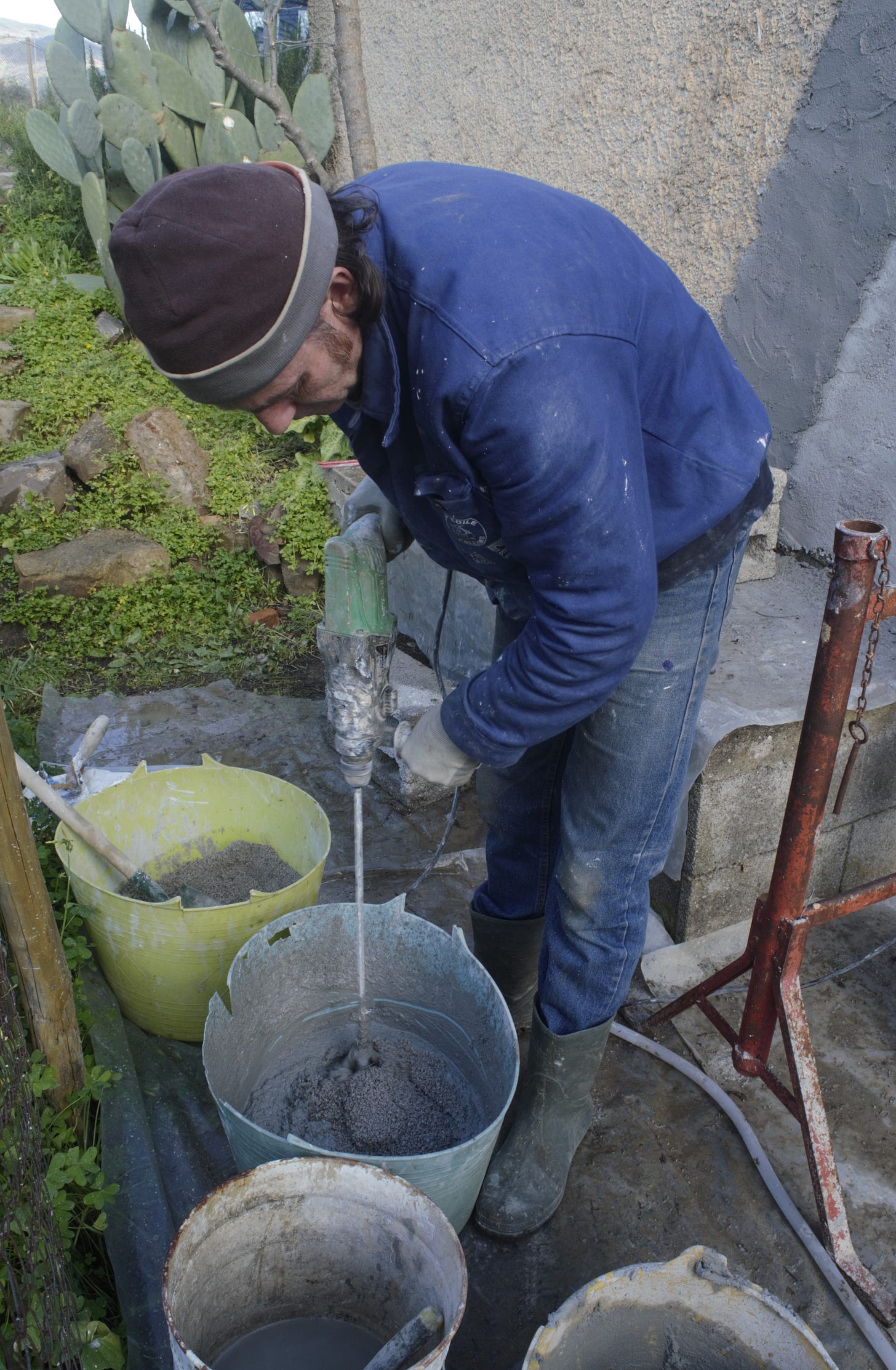Building in Italy Means Learning the Craft of Masonry and Concrete
A quest to discover the magic of concrete
CONTRADA MARGIAZZI, Castelbuono — I looked at the old broken wheelbarrow and thought better than to see it only fit for the scrap heap.
Instead of hauling it to the junk metal fellow in town, the wobbly and wheel-less wheelbarrow came home with me. I gave the thing – discarded in a friend's trash pile – another lease on life as a mixer for concrete, stucco and mortar.
I'd gotten cementitious on my project to turn two old barns outside the Medieval town of Castelbuono in the Madonie mountains of northern Sicily into a house for my family.
There was no getting around it: I needed to become more of an Italian mason and better at building with cements.
Italy – home to the world's largest unreinforced concrete dome, the Pantheon built in ancient Rome – is a land of legendary masonry and most Italian structures are made from bricks, stones, cinder blocks, volcanic rocks, tiles and concrete.
With the help of stiff wire and a board of wood, I got the discarded wheelbarrow to sit upright without falling over and – seeing myself as a druid over a cauldron – I began concocting mixes of water combined with cements, limes, sands, gravels and pebbles.
“Cement is of course an incredible material to work with,” I said to myself as I mixed a batch of concrete for a small terrace made out of tuff blocks (a soft rock composed largely of volcanic ash and a common building material in Italy) at the entrance to the lower level of the barn, where I'd begun work on a kitchen and dining area.
“But it is also one that has issues, has problems. I'm not that romantic: I'm not going to be writing poems about concrete – although you could, why not?”
Shovelful by shovelful, the first big pile of sand I'd had brought by truck to the worksite dwindled. Batch by batch of plaster, mortar and concrete, I became a more confident mason.
Going into Castelbuono was not just about buying materials – bags of cement, lime, marble, tiles, trowels, work gloves to protect my hands from the mineral products a mason works with – but about getting advice too.
“Cement changed the world,” an erudite architect and acquaintance called Nicolò Pierlucio Raimondo, now blind due to an accident, told me.
I was waiting in the main square when he came by. Guided by a walking stick, he said each day he leaves home to salute the image of Saint Anne, the town patronness, lying in the old castle walls up ahead.
I'd called out to him and asked him to tell me about the pluses and minuses of “cemento,” the Italian term to describe structures made with concrete.
He launched into a history I knew close to nothing about: How humans discovered the binding qualities of pozzolans, such as volcanic ash used by the Romans, and how the Arabs made mortars.
“Think about how much has been constructed in these last 100 years,” he said, spreading his arms wide. “Think about how much bigger cities have gotten in these last 100 years. Concrete had a big part in this. It helped speed up construction.”
“Take a look at what China is doing,” he continued. “Research this: The project to enlarge Beijing. They're building a new city for 130 million people.”
I was interested in things more empirical: What should I be concerned about with the cinder block and stone barns I'd purchased? What are the problems with concrete?
He raised his eyebrows and nodded.
“All construction needs to be able to withstand stresses: compression, traction,” he said. “But the only material able to withstand all this is steel. But you can't build everything in steel! You'd have to have steel mills everywhere.”
I nodded. I'd never thought of that before.
“How long will these concrete structures last?” he asked rhetorically and shrugged. “No one knows.”
And with that, he bid me farewell and headed toward the Medieval castle and Saint Anne.
In Italy, people worry about “stresses” for good reasons: It is both densely populated and regularly shaken by earthquakes.
Concrete, then, is both a magical tool but also perilous, I mused.
To better understand my project, I'd begun to live part-time in the upper story of the barn and imagined how I wanted it to be. I worried about the cracks in ceiling plaster applied decades ago. I reassured myself: “It will hold.”
But will it? I remembered a friend who said he'd damaged sight in one eye when a chunk of plaster fell as he slept. His injured eye was flecked and grey – a warning to be heeded.
Images of me sleeping in the bed in the upstairs of the barn, the fienile, on a night when even a minor earthquake strikes nearby scared the living daylights out me. I could just see my head getting pounded by a cascade of old plaster falling. I needed to be careful with concrete too.
Cements and concretes, I learned bit by bit, are complex materials we're still getting to know.
I stopped in to see Antonio Capuana, a friend who runs a busy marble cutting business with his brother.
“Look at this ancient place's walls,” he said, leading me to the back where the workshop shared walls with a much older structure.
“Look at how thick these walls are,” he said, running his hands over the massive stone wall. “Cement didn't exist,” he said, referring to today’s common cement mixes. “So they used stone and cocciopesto – clay mixed with some lime. And, well, they made these huge structures. These are load-bearing walls that keep up the entire house. This wall was part of a barn for an old monastery.”
Concrete, he said, arrived in Sicily in the 1900s and with it came a building boom, just like everywhere else around the world.
“And then it happened,” he said, shaking his head. “They destroyed the beautiful Sicilian coastline. You've got to acknowledge that too.”
Over the years, builders have discovered that reinforced concrete's biggest weakness is how water can seep through miniscule pores and cause the embedded steel to rust.
Rusty steel can cause cracks – a process known as spalling – and the cracks over time can get worse unless treated.
Capuana pointed to newer homes across the street. “Look at the overhangs of all those buildings made in the 1960s and 1970s. They were made with steel and concrete. Over time, we've had to rebuild them all.”
“Come, let me take you to see Mastro Gioacchino, he's one of the best,” Capuana said, leading me outside into the sun.
A few streets away, Gioacchino Allegra, one of Castelbuono's most trusted builders and a “mastro” – a master – was overseeing remodeling work on a newish home.
“In the 1960s, there was this boom with concrete building,” Allegra said, the sound of a cement mixer churning in the background. A worker shoveled sand into it.
“They thought it could do miracles,” he said, speaking over the sound of a electric chisel that had started up. “But then, with the passage of time and with experience – experience teaches us, as we know – our attitudes toward concrete changed.”
Previously, he said, concrete was used everywhere as though it was the solution to any building quandary.
“Nowadays it's clear that concrete must be more compact,” he said and then he too got back to work. An architect had arrived to discuss how to proceed with the remodeling.
Back out in the quiet of the countryside, I sat at my desk in the upper barn and envisioned the dozens of batches of cementitious materials I'd need to mix in the weeks and years ahead.
As I sat engrossed in thought, Amy Lamb Woods, a professional engineer and preservationist in Chicago and a concrete expert at the International Masonry Institute, popped up on my computer screen to talk with me.
For the next hour, she schooled me in the basics of concrete chemistry; how builders in antiquity experimented with gypsum, limes, volcanic ash, ground up brick dust; how Portland cement was first patented in England in 1824 and how concrete production became more efficient with the development of new kilns by the early 1900s.
Then came the post-war boom in concrete construction and the wave of Brutalist architecture associated with urban decay but also extraordinary examples of modern free-flowing designs.
Today, she said, debates rage globally over the preservation of aging reinforced concrete buildings. In the United States, for example, concrete structures older than 50 years can be designated landmarks.
“We are now looking at it as though they are historic,” Woods said. “There's also an onslaught of: 'Oh, it's concrete, it's ugly,' and they want to tear them down.”
“All of us preservation people are advocating for their preservation because we believe these buildings are iconic, breathtaking, especially when they're maintained well,” she said.
I felt better about my big basic concrete block barn, built sometime before 1962, according to the property's paperwork.
“Concrete masonry is the way to go for longevity, durability,” Woods continued. “The most green building you can build is the one that you restore and preserve. You're in essence keeping the building and so you're not putting it into a landfill, and you're continuing its use.”





